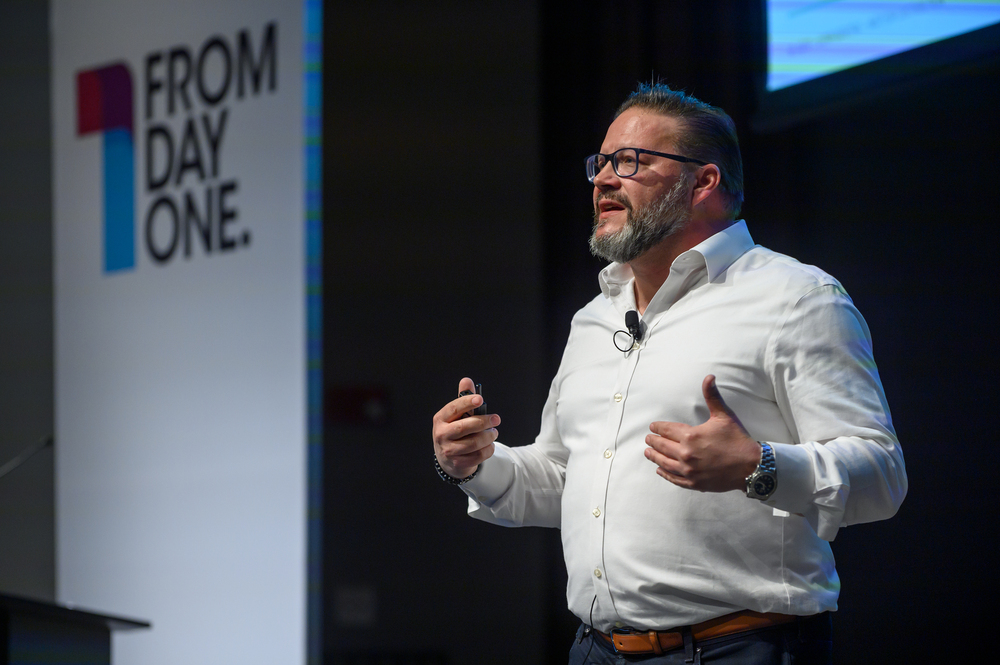How to Keep a Hybrid Workforce Engaged and Productive
As of February 2024, more than half (54%) of employees in the US who can work remotely adhere to a hybrid schedule, and 27% are exclusively remote, according to data from Gallup.Yet many employers remain suspicious of remote and hybrid arrangements, fearing lack of productivity, weakening engagement, sagging performance, and lost opportunities for employee collaboration and innovation. Hoping to understand employee movements outside of their offices, some employers have invested in employee-monitoring software, capturing everything from hours worked to keystrokes.Yet privacy is a major concern for workers, and invasive employee monitoring can feel like Big Brother is breathing down their necks, rupturing trust and putting workers on guard.“It’s really important that we think about [employee productivity] insights not as a mechanism to scratch an itch of curiosity, but a mechanism to provide continuous improvement as it relates to the way that we work together,” said Gabriela Mauch, head of the productivity lab at workforce analytics software platform ActivTrak.Mauch understands why the itch is there. “This conversation started three or four years ago when [companies] abruptly transitioned from being a fully in-office organization to a fully remote organization,” said Mauch. “So many of us felt the pain of lacking visibility into the time worked and schedule adherence that are critical to running the business.”Yet many employers are asking the wrong questions, misinterpreting data, and failing to trust their workers to spend their time efficiently. During a recent From Day One webinar on engaging a hybrid workforce, Mauch and her colleague Sarah Altemus, ActivTrak’s productivity lab manager, talked about how employers can better and–more responsibly–use employee productivity data.Speakers from ActivTrak discussed the topic "How to Get Hybrid Right: The Cornerstones of Success" (photo by From Day One)Employers are susceptible to misuse of employee productivity data, and not just because they may want to obsessively monitor every click of a worker’s mouse.There is plenty of room for misinterpretation. For example, working long hours doesn’t mean someone is more productive or engaged, it could mean that they’re overloaded or barreling toward burnout. Likewise, a light schedule may not indicate laziness or disengagement, it may be a sign of underutilization. “These can quickly become attrition risks,” said Altemus.This has been a common struggle for employers, according to Mauch. “While we maybe had clear expectations of how we expect people to work, what we managed to struggle with is whether people are working too much or disengaging.”So some employers have responded by grabbing at details they hoped would illuminate those patterns. But a closer look doesn’t always make things clearer, and good information can get buried in the minutia of massive data reports. Shrewd interpretation of data at a higher level provides a more accurate picture. “The right information can help your managers act as coaches and provide guidance without infringing upon the comfort of your workforce who want to make sure that they still have those critical levels of privacy,” said Mauch.Altemus encouraged employers to examine productivity data at a higher level, in the form of general activity logs. “Think of it as just a glance around the office that you would otherwise get if you were in person,” she said. “How many employees are working today? How are productive hours tracking relative to goals? Is engagement and productivity trending up or down? Are there teams that are at risk of burnout, disengagement, or misalignment?”Better information can help managers categorize working time as productive or unproductive and make sure workers are actually signing off from work at the end of the day–not burning the midnight oil until they burn out. It can help managers avoid proximity bias that favors in-office workers over remote or hybrid workers for promotions and raises. And it can help leaders make the most of face-to-face time and office reconfigurations.To this end, Altemus recommended clear expectations. “The success of a flexible workforce requires clearly delineated responsibilities and communication protocols,” she said. And it needs a performance management strategy.Employers don’t set arbitrary guidelines for guidelines’ sake, said Mauch. “At the end of the day, the intent of company policy is not just to ensure that people are following it, the intent of the policy is to optimize productivity, take care of your employees, and retain them.”That’s when activity reporting becomes invaluable, she said: When you stop trying to answer the question, “Did people badge in and did people badge out?” and instead answer “Does my hybrid policy fully maximize my ability to engage and reach my productivity goals?”Editor's note: From Day One thanks our partner, ActivTrak, for sponsoring this webinar. Emily McCrary-Ruiz-Esparza is a freelance journalist and From Day One contributing editor who writes about work, the job market, and women’s experiences in the workplace. Her work has appeared in the Economist, the BBC, The Washington Post, Quartz, Fast Company, and Digiday’s Worklife.





